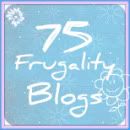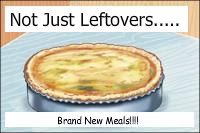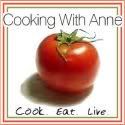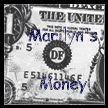Be forewarned that this is a very l-o-n-g post.
Shane and I have been thinking of trying our hand at soap making ever since my daughter gave me some handcrafted soap on Mother's Day of this year. Shane and I both like the soap much better than commercial bars, but don't like the prices we see in the healthy food stores and boutiques, which around here seem to be the only places to get handcrafted soaps. We decided to see if we could come up with a suitable version of homemade soap and possibly do it for less than we have to pay in the shops.
Well, I must say that this first batch will NOT be a money saver. I'll explain:
Last week I took a quick look at the formula I wanted to use, and bought the following:
Rice Bran Oil - 13 oz. - $9 (only brand I could find)
Coconut Oil - 14 oz. - $6 (I suspected I could find it cheaper at some Wal-Mart stores)
Essential Oil for Fragrance - .25 oz. - $6
Soap Dye - 3 pack - $2
A rubber stamp for decorating soap bars - $1
3 plastic serving trays for molds - $3
Liquid Lye - 32 oz. - $10
TOTAL $37
Additionally, the formula called for olive oil, which I already had in the pantry. I'll estimate that at about $5, bringing the total to $42.
On Sunday, before we started the soap making process, we realized three things. One was that we didn't have a stockpot that was non-aluminum or non-stick. Two was that we needed crystal lye instead of liquid. Three was that we didn't have enough rice bran oil. We decided not to try track down the rice bran oil, but to sub in more coconut oil because it would be less expensive and easier to find.
Stainless steel pot - $14 (thanks, Frances, for the Big Lots Buzz Card tip!)
Coconut oil - 32 oz. - $6 (yes, W-M had it and it was half the price I'd paid at the health food place)
Crystal lye - 1 lb. - $5, less the $10 on the bottle of liquid we returned = $5 overage.
So, that's another $15 added to the $42 above, for a total of approximately $57 spent. Yikes!
But wait...that's not as bad as it sounds, because we cut 24 bars from that batch, making each cost about $2.38 each. At the health food stores, similar-sized bars are between $1.79 and $4.00 each. Sure, it's more expensive than multi-packs of Zest or Irish Spring, but we're right in line for handcrafted soaps.
Alright, now that the financials are out of the way, here is the method. Our first run wasn't without errors, and we made it more complicated and time consuming than it needed to be, but it was an enjoyable activity that we plan to repeat...with a few changes.
First we measured all of our oils and put them in the stainless steel stockpot. The formula suggests measuring by weight instead of volume, so that took a little longer than just dumping oil into a measuring cup. Since we had changed the formula (this is the one we initially set out to make) to include more coconut oil and less rice bran oil, I ran the numbers through this soap calculator to see how much lye we needed to use. The amount was slightly less than the original formula.
Lye gives off fumes, so lots of ventilation is necessary. Since it was above the 90° mark on Sunday, we decided to work out on the deck rather than turn off the A/C to open up the house. Here is the pan of oil on the side burner of our grill.
While I heated the oil to 50°C (about 122°F), Shane mixed the lye into the water. I coughed and sputtered at the fumes a little, but it wasn't bad and I just moved a little more upwind of it and was fine.
(I later read that heating the oil wasn't necessary, but I assume that in the winter, when coconut oil is cool enough to be in solid form, I'll want to heat it enough to liquify it.)
The lye mixture heats on its own, so we had to wait a few minutes for it to cool back to 50°C. By then, it was a clear liquid again. Here is Shane carefully pouring the lye mixture into the oil mixture.
The pot was deep, so we used a paint stirring attachment on one of our cordless drills.
Here is the clear liquid just as Shane was beginning to mix it.
Here it is becoming opaque. Our goal was for it to reach "trace". Judging by the pictures on the Down To Earth blog, it should be thick enough to see soft mounds on the surface. We mixed for 5 minutes, then 10...then 15...20...25...30. No trace.
At this point we speculate that the humidity might be a factor, although that didn't seem right, either, because our ancestors mixed their soap in huge cast iron caldrons in the summer heat. But we moved inside anyway.
Once inside, the mixture thickened, but it still didn't look like Rhonda's pictures, so I did a Google search and figured out that the soap had reached trace, probably while we were still outside. So, all told, we probably mixed the soap about half an hour longer than necessary.
At this point we scooped out enough for two bars of plain, unscented, uncolored soap.
Then we added the entire 1/4-ounce of essential oil (grapefruit) and about 50 drops of soap dye. That amount of essential oil is just not enough for this size batch IMO, so I'll be looking for a source of less expensive oils. As for the coloring, 50 drops used about 1/4 of one bottle, so that's pretty cheap.
Here are the trays we used, sprayed with pan spray, then filled with the soap mixture.
This is when I learned a mildly uncomfortable lesson. I got some of the soap mixture on my hands. It's still a bit caustic at this stage, so while it didn't burn me, when I added water to it to wash it off, it caused my bare hands to tingle (kind of like a mild electric current) and to immediately get "pruny" as if I'd been soaking them in water for a long time. I rinsed them well with cold water and Shane poured vinegar over them, which neutralized the lye. I was fine, but I would recommend wearing gloves any time you work with lye or that the soap is still in the liquid form.
Our instructions said to wrap the molds in a towel to keep the soap from cooling to quickly, but our molds were too full and our garage, where we decided to cure the soap, is warm, so we didn't wrap them.
Fast forward to the next morning. Time to unmold the soap. Let's just say that next time we'll use a softer plastic or silicone container. Although the trays I used had a little flexibility, they weren't pliable enough and I broke the first one into pieces getting the soap out.
The second tray worked better, as did those two little baby food containers that held the plain soap.
The soap is firm, but pliable at this stage. It's easy to cut with a sharp knife, or as I did, a wavy vegetable slicer. Since the soap didn't come out of the molds pretty, I decided to go for the rustic look. I tried pressing a couple of bars with rubber stamp, but didn't like that look at all. See all the scraps? Once cured, we'll put those in a small mesh bag and use them in the shower.
Here are a plain bar and scented bar side by side.
And in case you're wondering if it's really soap, here is what happened when I ran water over the utensils I just used. Yes, it's soap. It's still pretty harsh and drying at this point, but it didn't cause me to run for the vinegar or anything, and I assume it gets milder as it cures.
All the work is basically done now. The soap needs to cure, so I'll be turning the bars every day so they cure evenly. We will probably try a bar at the 4 week point, but I suspect we'll let the rest cure for at least 6 weeks. After that, we'll use the soap, noting what we do and don't like about it, and try to make changes accordingly for our next batch.
The soap-making process is long, but it's not complicated, and subsequent batches should move along more quickly now that we have an idea what to do. If you decide to give it a try, just make sure you have plenty of time before you start and that no small children or pets are around to distract you or get into things.
July Grocery/Pantry Challenge:
Items Purchased Today (store brand unless indicated): None
Amount Spent Today (including tax): $0.00
Amount Spent To Date in July (including tax): $110.21































11 comments:
Hello- I used to have a soap making business and I could give you a few recipes that would bring your soap cost down to less than .50 a bar. I also have many sources for the necessary oils, scents, and colors in bulk if you would like them. Please feel free to contact me if you would like that info. By the way, your first batch of soap looks way better than my pitiful first attempt did. LOL -Rose
Rose: I would love more information! You can email me at imannies@gmail.com.
Thanks in advance!
How interesting! And I am so glad I sent you to Big Lots just in time. LOL!
I have made soap before, but it was melt and pour. I think I am far to lazy to make it the way you did.
I do love homemade soap, though, and it makes wonderful gifts.
Frances: We go to Big Lots quite a bit, but didn't yet have a Buzz Card, and definitely wouldn't have known about the sale last Sunday. Our store ran the sale all day, not just during the evening. :)
Wow--seems to be very involved but worth it! I will have to try to find the ingredients around here so we can try this. I like that I know exactly what will be in the soap. The finished product looks very nice. Thanks for sharing your experience!
Wow - that soap looks amazing.
Your soap looks so good. I'm still scared to try it though.
Sheila: It is nice to have only ingredients you can pronounce. :)
TWS: Thank you!
Lisa: Scared of the lye? Or the process in general?
The soap looks really good. I keep saying I'll have a go at it one day myself, but I'm a bit lazy. I might give hot process soap a go instead of the cold process because it doesn't need to cure for just as long and I can make it in my old crockpot.
I can get my hands on most of the ingredients here for next to nothing, apart from the oil. I'll have to look into the price first before giving it a whirl:)
Nice job!
And I wouldn't count the cost of the hardware(the pot, utensils, molds, etc. you had to buy to start)in the cost of the soap, as those aren't things you have to buy every time you make it....unless you plan on tearing up the molds each batch.lol
Just be careful if you opt for a silicone mold next time....you'll need something to stabilize it(another hard pan to put the silicone one in, etc.), but I'm sure you've considered that already. ;-)
I made soap as part of my 8th grade science fair project(got a 2nd place ribbon too)...maybe I should take it back up again?lol
Leanne: I haven't even looked into hot process soap. I should do that.
Sluggy: You're right. The per-use cost of the pan will be negligible after a few more uses. And I've cooked with silicone, so I know all about the pitfalls (or maybe I should say cakebatterfalls) of using silicone. Have to admit...it was all kinds of fun breaking that mold apart, though.
Post a Comment